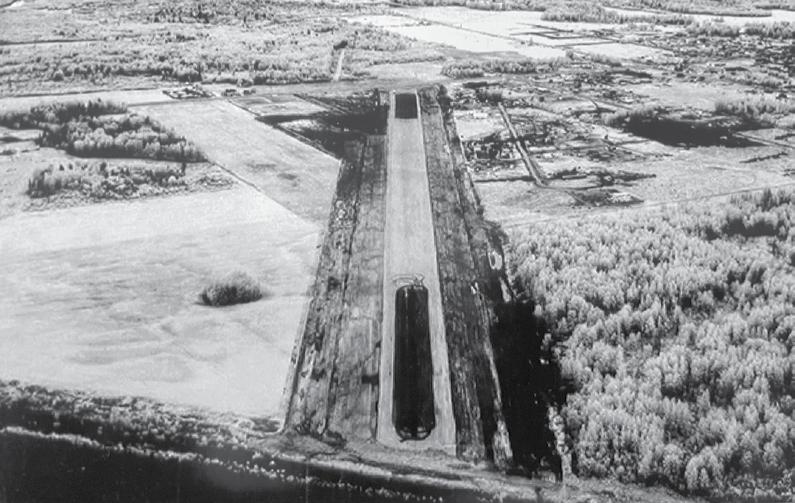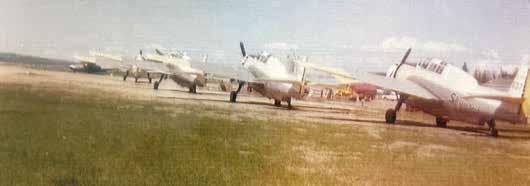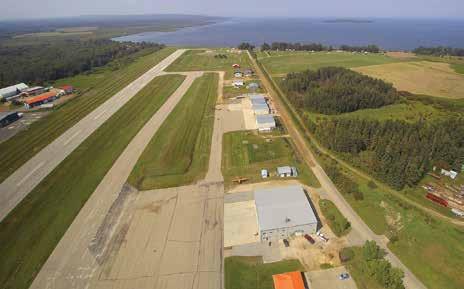

AAMA study calls for urgent funding to support rural airports
Industry steps towards unleaded avgas replacement fuels
How regional airports support local communities
Published
Suite



AAMA study calls for urgent funding to support rural airports
Industry steps towards unleaded avgas replacement fuels
How regional airports support local communities
Published
Suite
Getting the lead out: Industry steps towards unleaded avgas replacement fuels
Ready for the unexpected: How airport emergency preparedness keeps operations safe 24 Red Deer Regional Airport expansion: A gateway to central Alberta's future
Transforming airfield maintenance: How predictive practices enhance safety and efficiency 29 International flights into regional airports, not as easy as it sounds 30 Gateways to growth: Olds-Didsbury and Sundre airport's role in Mountain View County
Elevating opportunities at the Westaskiwin Regional Airport
The Slave Lake Airport celebrates 60th anniversary
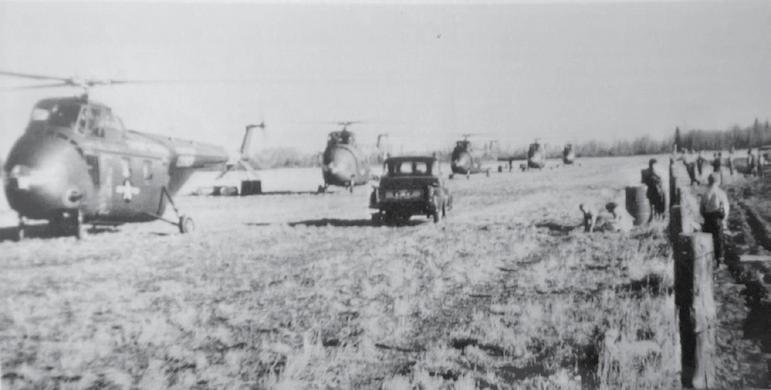
President & CEO: DAVID LANGSTAFF
Managing Editor: SHAYNA WIWIERSKI shayna@delcommunications.com
Sales Manager: DAYNA OULION dayna@delcommunications.com
Advertising Account Executives: COLIN JAMES MIC PATERSON
Production services provided by: S.G. Bennett Marketing Services
Creative Director / Design: KATHLEEN CABLE
Contributing Writer: HAROLD THORIN
Cover Photo Courtesy of: MOUNTAIN VIEW COUNTY
© Copyright 2025 DEL Communications Inc. All rights reserved. The contents of this publication may not be reproduced by any means, in whole or in part, without prior written consent of the publisher.
While every effort has been made to ensure the accuracy of the information contained herein and the reliability of the source, the publisher in no way guarantees nor warrants the information and is not responsible for errors, omissions or statements made by advertisers. Opinions and recommendations made by contributors or advertisers are not necessarily those of the publisher, its directors, officers or employees.
Publications
agreement
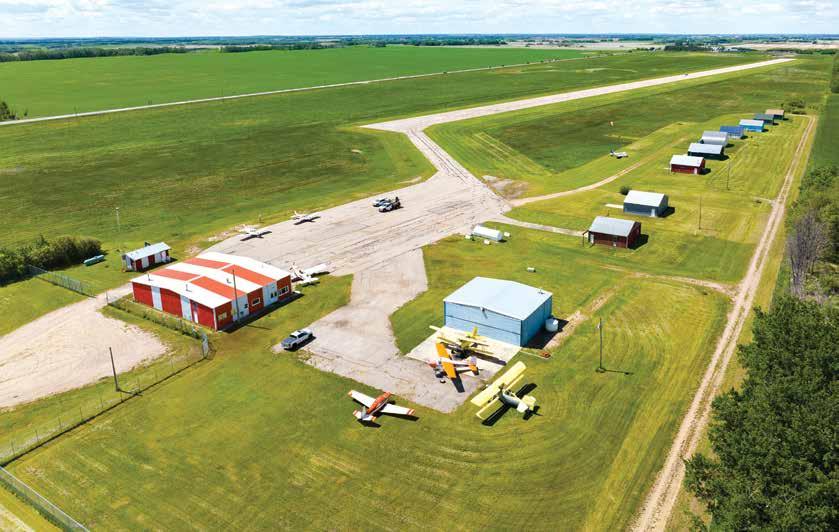
By Shayna Wiwierski
In Alberta, the small airstrips dotting rural landscapes are vital lifelines. From medevac flights whisking patients to safety to aircraft battling the province’s increasingly destructive wildfires, community airports are the unsung heroes of public health and safety. Unfortunately, a new study by the Alberta Airports Management Association (AAMA) reveals a troubling reality—78 per cent of these facilities are not financially selfsustaining, raising alarms about their long-term viability and prompting urgent calls for government action.
The AAMA, which represents operators of Alberta’s small and
regional airports, commissioned aviation consultancy HM Aero Aviation Consulting to conduct a comprehensive analysis of the province’s community airport network, which includes smaller regional hubs like Grande Prairie, down to tiny strips in places like Manning and Elk Point. The findings paint a stark picture of aging infrastructure, mounting operational costs, and a funding model that leaves municipalities shouldering burdens they can scarcely afford.
“We were hearing concerns from our members—things like infrastructure degradation, lack of financial support, and vulnerabilities in regional air
The AAMA, which represents operators of Alberta’s small and regional airports, commissioned aviation consultancy HM Aero Aviation Consulting to conduct a comprehensive analysis of the province’s community airport network. Seen here is the St. Paul Aerodrome.
service,” says Logan Boyd, AAMA chair and airport manager at the Medicine Hat Regional Airport. “These airports are critical, but they’re struggling to keep up.”
The study identifies high fixed costs as a primary culprit. Maintaining runways built in the 1940s and ‘50s—many of which have seen only sporadic upgrades—requires significant investment, from snowclearing crews in Alberta’s harsh winters to equipment and staff to meet safety standards. Yet revenue streams remain elusive.
“They’re lifelines for communities, but there’s only so many opportunities to recover costs from users,” says
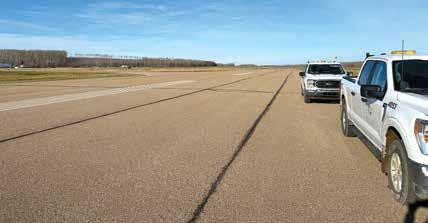
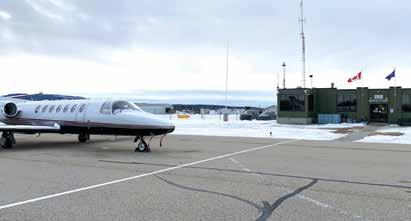
Boyd. “Unlike larger airports buoyed by passenger fees or commercial leases, small facilities rely heavily on municipal budgets, which are increasingly stretched thin.”
This financial strain has tangible consequences. Alberta Health Services has hesitated to serve some communities with medevac flights due to pavement deterioration and inadequate maintenance staffing. Aerial firefighting, search and rescue, and law enforcement operations, which account for a significant share of traffic at these airports, are also at risk.
“The province is the biggest user of these facilities,” says William Stewart, director of terminal services at the Grande Prairie Airport and an AAMA board member. “If they’re relying on
them, they should be funding them.”
The regulatory landscape adds another layer of complexity. While formal regulations for small, registered airports remain minimal, expectations from provincial air carriers have soared. Rightfully, runways must be inspected more frequently, maintained to exacting standards, and kept clear of snow. While this is all for good reason, Boyd says the cost was a struggle for small operators to bear. What’s more, carriers are less willing to take risks these days. If they’re not comfortable with the condition of a facility, they won’t land.
The AAMA has taken its case directly to the government. In a recent faceto-face meeting with Premier Danielle Smith and Transportation Minister
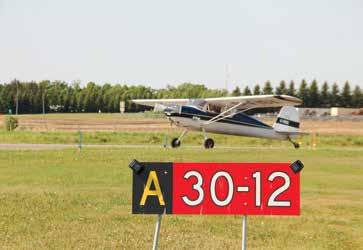
Devin Dreeshen, the AAMA presented the study’s findings, pressing for both capital and operational funding. The reception, they said, was encouraging.
“The premier was engaged and asked for specifics—like how much it costs to run a community airport for a year,” Stewart recalls. The association has since provided that data, hoping to influence the province’s next budget cycle.
The study argues that current funding mechanisms fall short. The Strategic Transportation Infrastructure Program (STIP), the primary provincial grant for small airports, allocates just $2 million to $3 million annually at a 75 per cent cost-share—far below the $15 million the AAMA estimates is needed to address a backlog of capital projects.
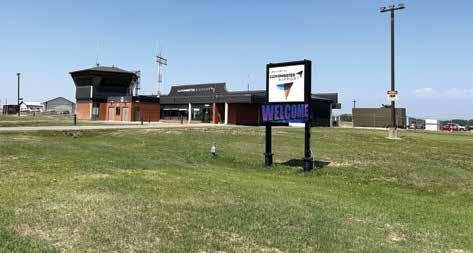
The association’s recommendations are clear: expand STIP eligibility to non-municipal operators, broaden the scope of fundable projects, and establish an operational grant tied to provincial usage—say, a stipend for each medevac landing. Seen here is the MD of Bonnyville Regional Airport.
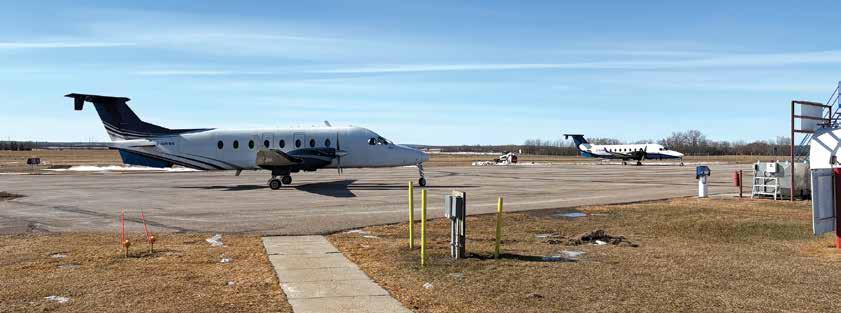
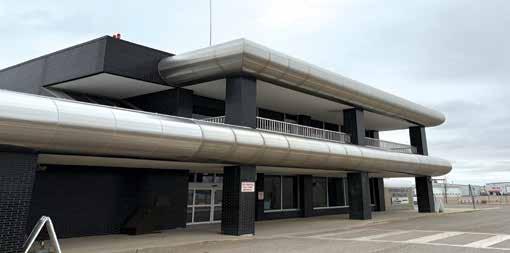
Eligibility is limited to municipalities and restricted to runway paving and lighting, leaving gaps for needs like weather observation systems or perimeter fencing.
“That $2 million doesn’t go far when you’ve got dozens of airports applying,” says Boyd, adding that operational funding, meanwhile, is nonexistent, leaving daily expenses to local taxpayers.
The association’s recommendations are clear: expand STIP eligibility to non-municipal operators, broaden the scope of fundable projects, and establish an operational grant tied to provincial usage—say, a stipend for each medevac landing. Boyd says that these are assets for public health and safety, not just municipal priorities. There needs to be clarity on roles— provincial or federal—and stronger support.
For now, Alberta’s community
airports hang in the balance. The AAMA envisions a future where these facilities thrive as connectors
state—or at all. As wildfire seasons intensify and health care demands grow, the stakes could not be higher. For the operators keeping these runways open, the message to the government is simple: help us help you.
“These community airports are an incredibly important portion of the province’s activities insofar as both medevac and firefighting, which has been incredibly relevant lately,”
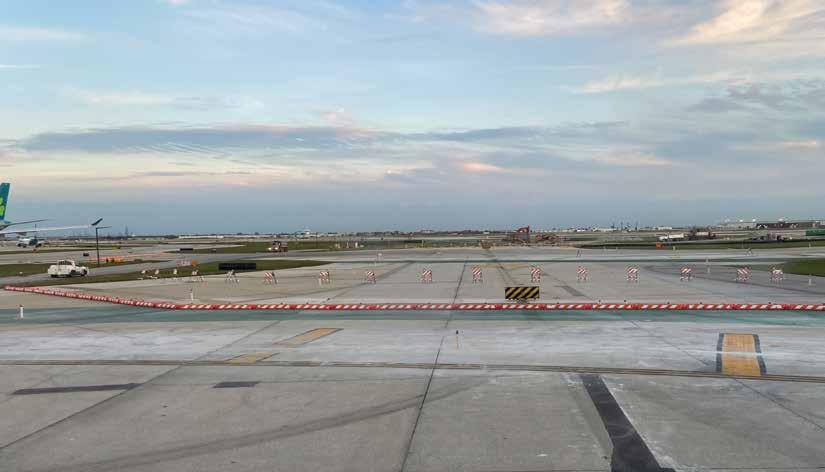





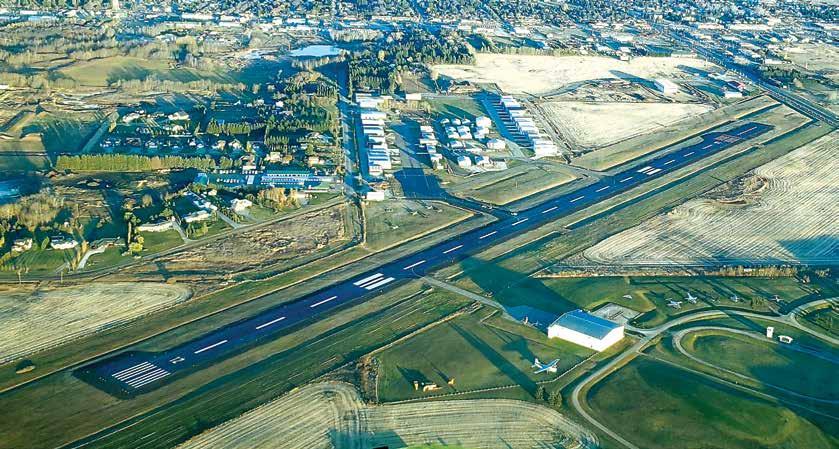
By Shayna Wiwierski
Regional airports may not always be in the spotlight, but their role in supporting local communities is immense.
While smaller airports often lack the scheduled commercial services found in larger hubs, they provide important services that contribute to various sectors such as agriculture, health care, tourism, and local events. These airports are also tightly integrated with the communities they serve, providing both economic and social benefits.
In Alberta, two airports— the Wetaskiwin Regional Airport and Slave Lake Airport—demonstrate how these facilities contribute to everything from agricultural support to emergency services, making them vital for both business and daily life in their areas.
The Wetaskiwin Regional Airport, located an hour south of Edmonton, celebrated 50 years of service in 2024. While it lacks scheduled passenger services, it has built a unique position within the community.
“We have hanger homes, so we actually have a community of people that live at our airport. This community is blended with businesses that either rely on the airport to operate or support aircraft operations, that range from aerial application services and flight training to aircraft sales, avionics upgrades, maintenance, and repair services,” says Wendy McArthur, airport management coordinator at the Wetaskiwin Regional Airport.
“For the most part, we facilitate an indirect contribution to employment and the GDP through
The Wetaskiwin Regional Airport, located an hour south of Edmonton, celebrated 50 years of service in 2024.
supporting the agriculture and flight training industries for the City and surrounding communities and generate some tourism as well since we are attached to the ReynoldsAlberta Museum.”
The airport's support for the local economy extends to health care as well. Wetaskiwin provides a crucial medevac service, offering access to fixed-wing aircraft for those requiring specialized care and transport to larger hospitals. The facility also hosts community events, such as a skydiving celebration during its 50th anniversary last year, and partners with the city on a range of local activities.
Notably, Wetaskiwin's airport is not self-sustaining financially.


“We are subsidized by the local municipality,” McArthur explains. This financial support from the city ensures the airport can continue to provide valuable services despite its operating costs exceeding revenues. The airport also plays a key role in training young pilots, helping to address the national pilot shortage by offering education and flight training that keeps the aviation sector growing in Alberta.
Further north, the Slave Lake
Airport is a certified facility that plays a critical role in emergency services and industrial support.
Pierre Gauthier, airport manager, underscores the airport's importance to the community with a focus on medevac services and forestry operations. The airport is strategically located for quick access to medical transport, serving as a vital link for those needing urgent care in Edmonton, three hours away by road.
“Being three hours away from
Edmonton, it provides a quick service to [the city] for those in need,” says Pierre Gauthier, airport manager at the Slave Lake Airport Services Commission. “[Medevac] also serves the communities north of us and the surrounding communities.”
The airport also supports the forestry industry, providing access for helicopters and firefighting aircraft during the summer months. This creates significant employment in the area, as pilots, crews, and ground
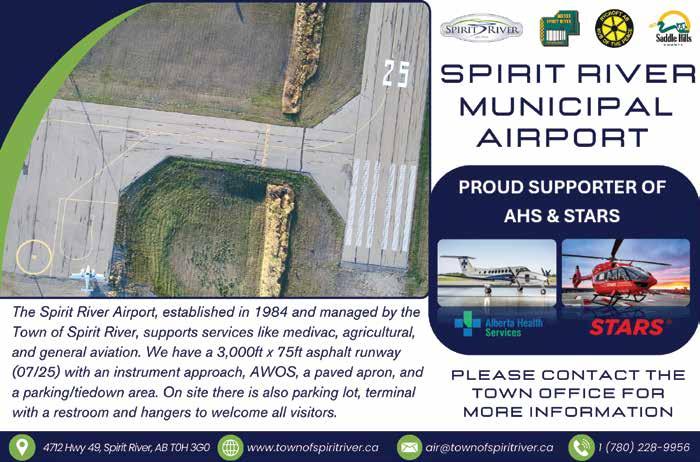
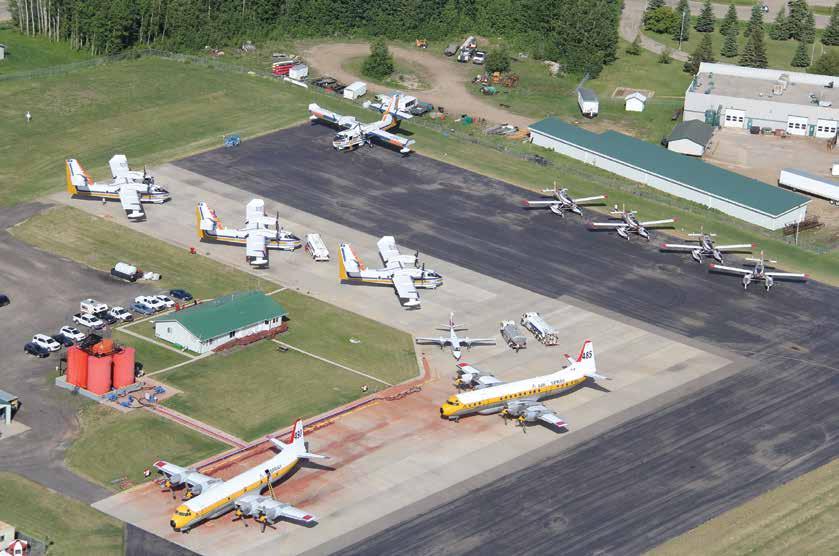
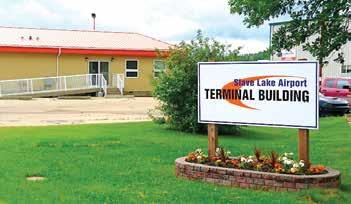
staff all rely on the airport for their operations.
Beyond emergency services, Slave Lake supports the oil and gas industries. Charter flights and private flights are regular occurrences, often related to industrial needs in the surrounding area. However, Gauthier notes that, while the airport has seen an influx of private pilots, the number of helicopter operators based at the airport has declined, which may point to broader industry challenges.
Despite these fluctuations, the community benefits from events that bring the town together, including a skydive event in 2021 and in August
of this year, a Fly-In and Airport Discovery celebration is planned for the airport’s 60th anniversary. These events provide the local population with opportunities to engage with aviation firsthand, whether by participating in a skydive or touring medevac aircraft and forestry helicopters.
Both Wetaskiwin and Slave Lake face challenges in maintaining and growing their services. Wetaskiwin, for example, is working on a multiyear pavement rehabilitation project, however, has utilized all sources of grant funding, leaving the remaining costs of the pavement in need of
rehabilitation to be funded by the municipality. Growth is unlikely, or will be very slow, without further airport infrastructure investments that facilitate and attract airport growth, like extending the runway or developing more hangar spaces. Yet, McArthur admits that the airport operates at a loss every year.
The local government steps in to provide financial support to keep the airport running, a model that is not unique to Wetaskiwin, but common for many regional airports in Alberta.
“The city sees the value of the airport to the community and subsidizes our operations accordingly,” says
McArthur. “There is property tax collected on all the hangar properties, so that does generate some revenue going back to the municipality. For the most part, a small amount of user fees is the only revenue we generate.”
Slave Lake, meanwhile, is grappling with unique environmental challenges. The airport's proximity to Lesser Slave Lake means that shoreline erosion threatens its runway. The airport is currently seeking funding to install protective measures, such as sheet pilings, to safeguard its operations. Despite these challenges, Gauthier remains optimistic about the future, especially for airports that serve critical industries like forestry and medevac.
The future of regional airports in Alberta is closely tied to the support they receive from local municipalities and the provincial government. Both McArthur and Gauthier agree that while their airports provide significant value to the community, they remain underfunded, particularly in comparison to larger facilities.
“I think it’s becoming challenging with the cost of operating for small airports that don’t generate a lot of revenue,” says Gauthier. “I think there’s a definite challenge there for them to continue operating, to continue plowing snow and maintain their lighting system or their asphalt without more support from the Alberta government.”
Regional airports like Wetaskiwin and Slave Lake are not just places where airplanes land and take off—they are integral to the fabric of their local communities. They support industries, provide emergency services, contribute to economic
development, and offer spaces for recreation and education. As aviation technology evolves, especially with the growing use of drones and remote piloted systems (RPAS), these airports will continue to be central to Alberta’s economic and social life, even as they navigate the challenges of funding and sustainability.
“We’re very much part of the community,” says Gauthier. “Airplanes come and go daily and whether you’re at the campground or in your home or business, you can see them coming and going right out your window. We’re definitely a big part of the community.”


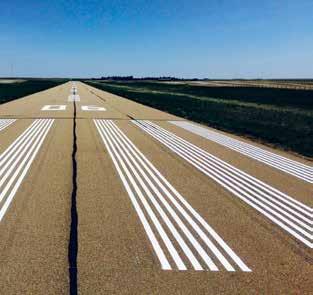
When you need lines painted, or retouched talk to the team at Marshall Lines. Over time, lines and markings on asphalt can begin to wear thin making them more difficult to see and increasing the risk of accidents. We can make your lines look like new again and can also repair cracks in your asphalt. We’ve been in the business for over 25 years in Cardston! Call us for a quote!
• Airport line painting
• Parking lot painting
• Highway line painting
• Asphalt crack sealing
• Asphalt seal coating
• Free estimates

Unlike the familiar parallel voltage-driven circuits found in commercial buildings, airfield lighting operates on a series current-driven model— a design that presents unique challenges and significant safety risks.
When it comes to electrical systems, airfields are not your typical setup.
Unlike the familiar parallel voltagedriven circuits found in commercial buildings, airfield lighting operates on a series current-driven model—a design that presents unique challenges and significant safety risks. As the lifeblood of airport operations, airfield electrical systems demand highly specialized knowledge and a strict adherence to safety protocols.
For Anthony Kish, an experienced airfield electrician at the Lethbridge Airport, the dangers of working with airfield electrical systems are never far from his mind.
"It’s a whole different ballgame," Kish explains. "The voltages involved can potentially be between 50 to 5,000 volts. Safety is of the upmost importance when working with it.”
Airfield electrical systems are designed to keep running under
any condition, ensuring that crucial lighting such as runway edge lights and approach beacons remain operational even in the face of extreme weather or technical malfunctions. However, this robustness comes with a dark side: a lack of personal safety features.
Kish says that unlike commercial systems, which have built-in protection for workers, the airfield system isn't designed for that. The goal is to keep the system running, not to protect the person working on it. This makes working on the airfield a high-risk job, requiring extensive training and careful adherence to safety procedures.
The design of airfield circuits—built around a series current-driven model—makes the systems not only dangerous, but also more difficult to repair. The complexity of troubleshooting and maintaining these systems is one reason why airfield electricians must have specialized training and certification.
In Alberta, this requirement is supported by legislation, which restricts electrical work on airfields to those who are certified for airfield lighting systems, however, one of the biggest hurdles in airfield electrical work is the scarcity of qualified electricians.
“There’s few qualified and trained electricians across Canada that work on the series circuit systems,” Kish says. “And so, it’s really hard to troubleshoot or get help really when you’re looking for this, so that’s why we stick together.”
Keeping up with the regulations is no small task. Electrical systems on airfields must comply with rigorous standards set by Transport Canada, which cover everything from circuit design to safety protocols.
The Canadian Airports Electrical Association (CAE) plays a vital role in ensuring that airfield electricians stay compliant and up to date. Through its Canadian Airports National Electrical Workshop (CANEW), CAE

offers annual hands-on training, allowing electricians to refresh their skills and learn about new safety issues.
“Specialized training and experience is extremely necessary when dealing
with airport systems,” says Kish.
“You can really rely on the training that you’ve experienced and all the training that you get from the CANEW program to help mitigate [issues] because airfield lighting is
like nothing else in North America. It’s such a different beast.”
The risk of fatal injury on the job is something every airfield electrician contemplates daily. But Kish notes that the stakes are higher than
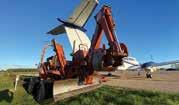

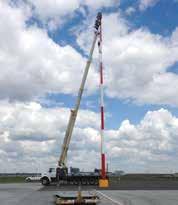
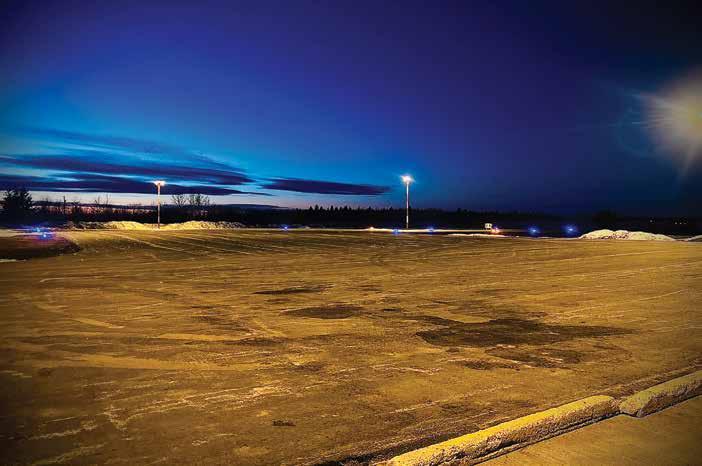
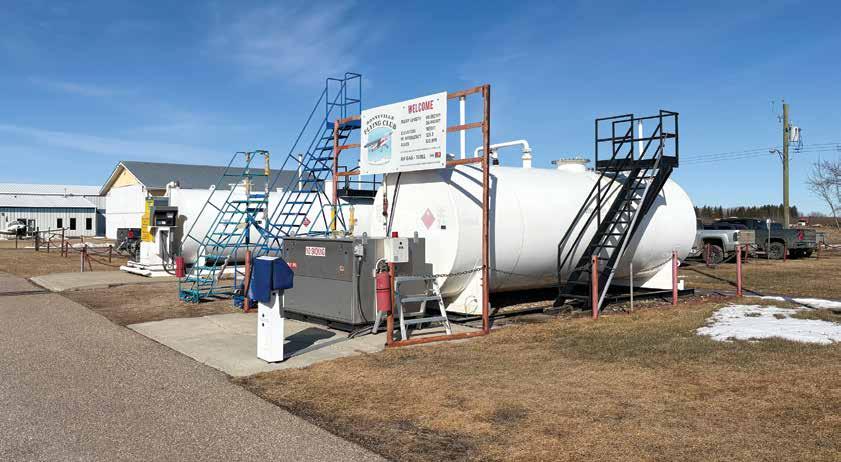
and support fleetwide authorization. Launched in 2022, Eliminate Aviation Gasoline Lead Emissions (EAGLE) was
created as a government-industry partnership to safely replace leaded aviation fuels by 2030.

Three producers are advancing candidate 100-octane replacement fuels: Swift Fuels (100R), General Aviation Modifications Inc. (G100UL), and LyondellBassell/VP Racing (UL100E). Both Swift Fuels and General Aviation Modifications currently have unleaded replacement fuels available for sale at select U.S. airports, with use growing in recent years. Swift Fuels also offers a 94-octane product suitable for a subset of piston-engine aircraft. Research and testing continue on each fuel to ensure safety and suitability for use.
Although Canada has not yet seen the same regulatory and industry momentum as in the U.S., the implementation of unleaded avgas replacements may be on the horizon. The National Research Council is a participant in the PAFI
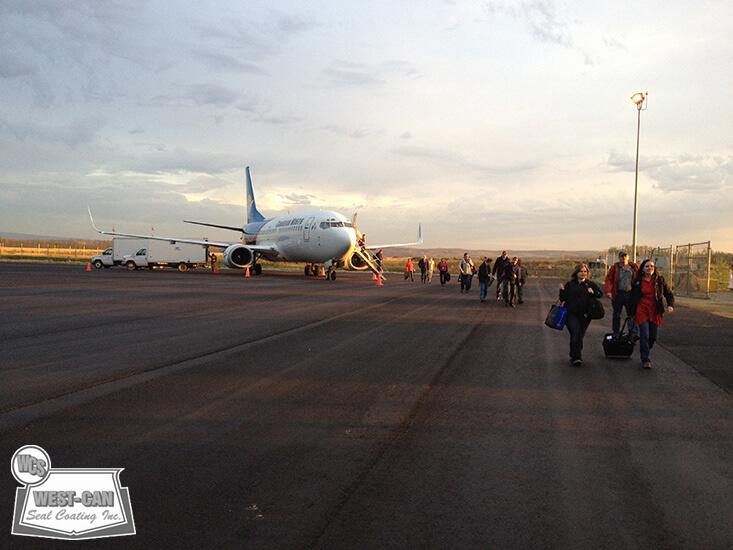


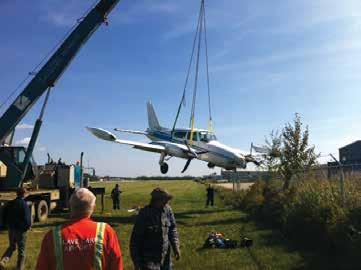
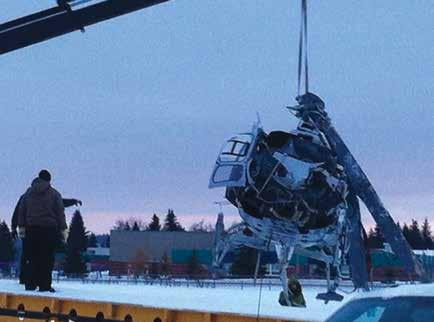
This is where live exercises, such as using vehicles to simulate aircraft accidents, become vital. These exercises help responders not only practice their skills, but also build teamwork and understand the dynamics of an airport emergency. By closing the airport, monitoring traffic, and coordinating multiple teams, airports can simulate an emergency environment that closely mirrors real incidents.
For smaller airports, budget and staffing constraints often limit the scope of training. However, Coutts offers practical solutions.
“Invite as many people for as many tours as they’re willing to come for. Do the tabletop exercises with anyone that’s willing to participate and if you can move up to the bigger live exercises, the faster you can do that, the better,” he says.
“You want people to be familiar and comfortable at the airport and with those processes that happen.”
New technologies, particularly in communication systems, are also reshaping how airports manage emergencies. Alberta’s transition
to a digital radio system for first responders, for example, has introduced some challenges, as airports must now manage multiple communication systems. Coutts says that airports have to juggle ground-to-ground and groundto-air communications, and then they have to integrate the new first responder systems into their operations. This technological complexity underscores the need for regular training to ensure that communication systems are effectively integrated into emergency operations.
Once an emergency is resolved, airports face another challenge: returning to normal operations. Post-incident recovery can take days or even weeks, especially if an investigation is required. Coutts stresses that airport operations must be prepared for this downtime.
“Understanding what’s going to happen after something happens is important,” he says. “Was there an aircraft vehicle incursion? Was there an actual event that happened? Did somebody crash? There’s going to be a timeline after that for
investigation, cleanup, repairs, and then back to normal operations.”
In a world where the unexpected can occur at any time, airports must remain vigilant. Through continuous training, coordination with local responders, and embracing new technologies, airports can ensure that they are always ready to keep passengers and staff safe, no matter the crisis.
Looking ahead, Coutts predicts two major trends that will impact emergency preparedness: increased air traffic and limited funding.
"We’re just going to keep getting bigger numbers of aircraft moving around. I also don’t think the funding is going to keep up the pace of that increased traffic,” says Coutts. “So, I think there’s just going to be more opportunity for bad things to happen and I think we’re seeing it in the news every day today. And so, I think that they have to keep pushing forward to have a current emergency program and that it’s actually trained on constantly so people know what’s going on.”
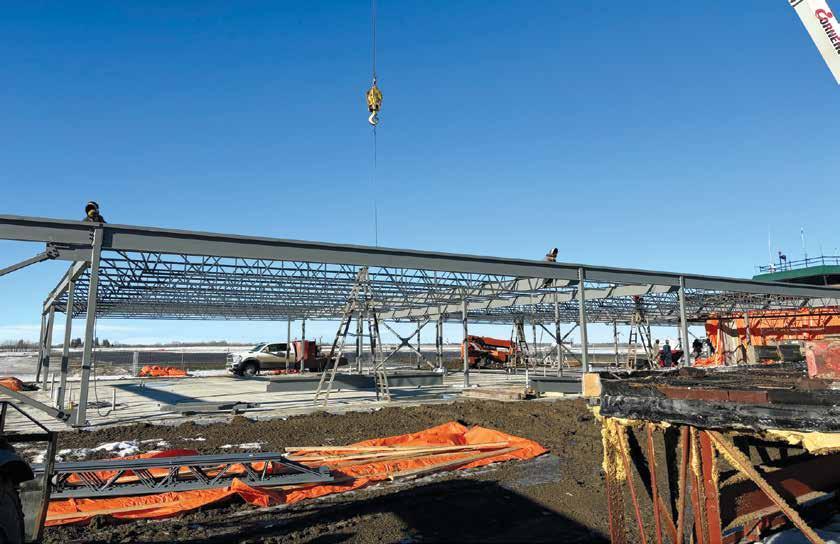
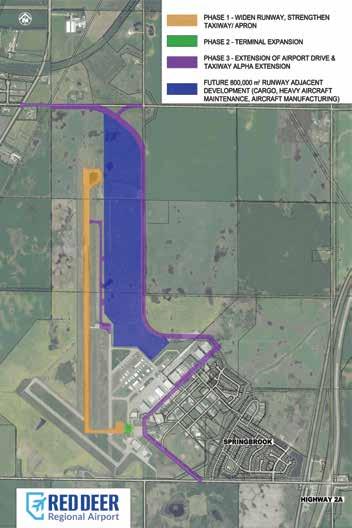
In the heart of Central Alberta, surrounded by rolling plains and thriving communities, the Red Deer Regional Airport (YQF) is undergoing a transformative threephase expansion that is set to redefine travel, commerce, and connectivity in the region.
Phase 1, completed in 2022, marked a major milestone with the widening of the main runway by 50 feet, strengthening and expanding Taxiway Bravo, and enhancing the main taxiway. These upgrades now allow the airport to accommodate larger aircraft, including Boeing 737s, significantly increasing its operational capacity.
Phase 2, the construction of a brand-new terminal, officially opened in September 2024, coinciding with the celebration of the Red Deer Regional Airport Authority’s 25th anniversary. This 10,000-square-foot addition features enhanced security screening, a baggage claim area, space for future customs services, and the ability to process up to 189 passengers from a full-capacity Boeing 737-800. This expansion elevates the passenger experience and further positions YQF as a key travel hub for the region.

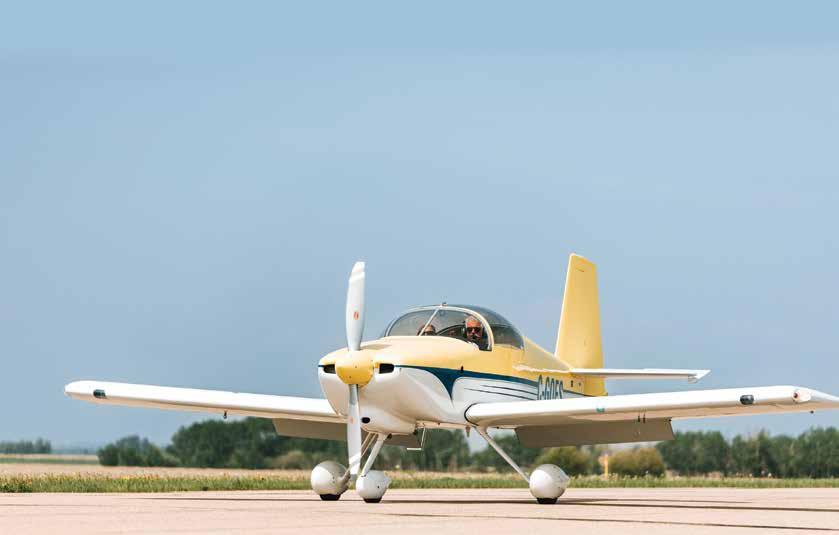
Sundre Airport, nestled near the foothills of the Rockies, serves as a gateway to a region known for its tourism and resource-based industries.
In the vast expanse of Alberta, where distances can be significant and communities
spread across the landscape, regional aviation can play a significant role. Airports like Olds-
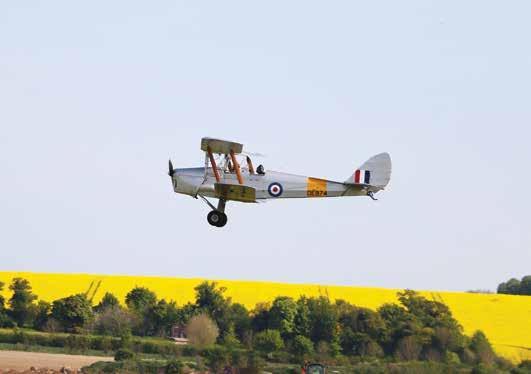
Regional airports, like Olds-Didsbury and Sundre, are more than just runways.
Didsbury and Sundre in Mountain View County, are threads in the economic and social fabric of their respective regions. Their value extends beyond simply facilitating the occasional private flight; they are important infrastructure that supports local businesses, enhances emergency response capabilities, and contributes to overall regional connectivity.
The Olds-Didsbury Airport, strategically located between the major hubs of Calgary and Edmonton, offers a link for businesses in Mountain View County. Its proximity to the Queen Elizabeth II Highway enhances its accessibility, making it an attractive option for companies needing efficient transportation. The airport supports
Wetaskiwin isn’t just a business-friendly destination—it’s also a community for aviation enthusiasts.
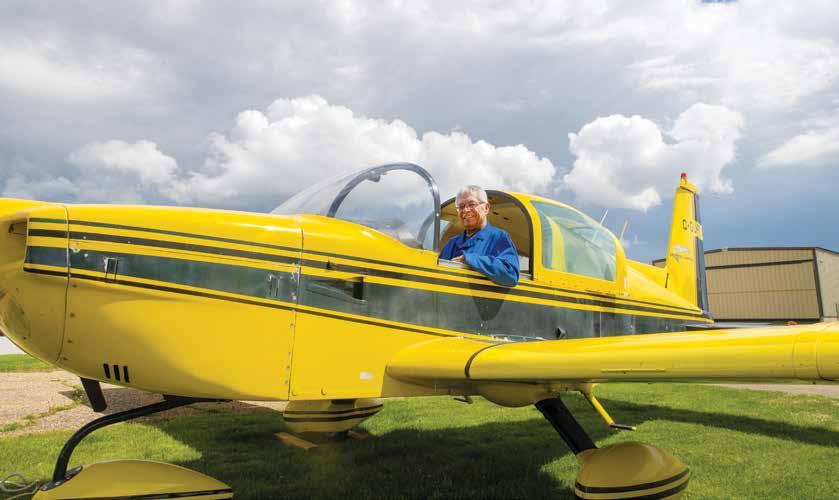
For companies considering expansion or entrepreneurs seeking a strategic location, the Wetaskiwin Regional Airport presents a unique value proposition. With its robust aviation ecosystem, business-friendly policies, and ample room for growth, Wetaskiwin is more than just a place to land—it’s a launchpad for success.
Discover how Wetaskiwin can support your next venture. Contact us today to explore the opportunities awaiting at the Wetaskiwin Regional Airport.
For more information, contact Vern May – Economic Development Manager City of Wetaskiwin 780-360-4727 vern.may@wetaskiwin.ca.
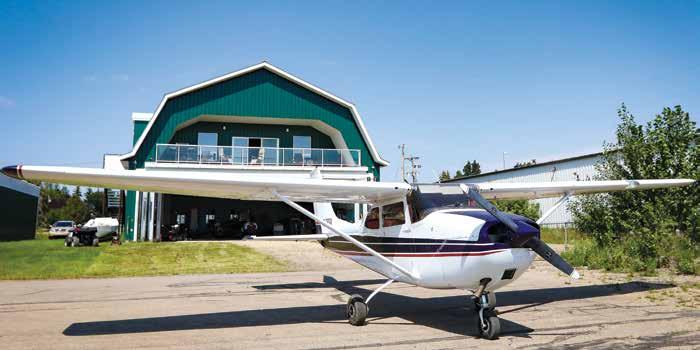
With its robust aviation ecosystem, business-friendly policies, and ample room for growth, Wetaskiwin is more than just a place to land—it’s a launchpad for success.

• No landing or runway fees
• Located along Victor 301W (low altitude air highway between Calgary and Edmonton), just outside the Edmonton control zone
• More than 50 aircraft hangers
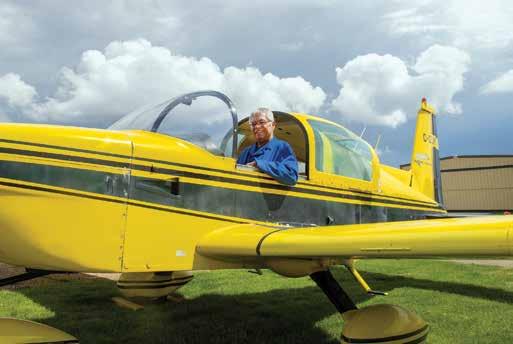
• More than 10,000 aircraft movements per year
• Ability to own land vs leasing
• Airplane parking and fueling
• 24-hour terminal access
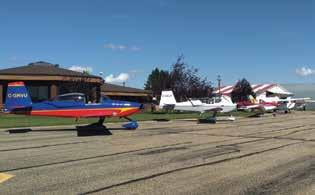

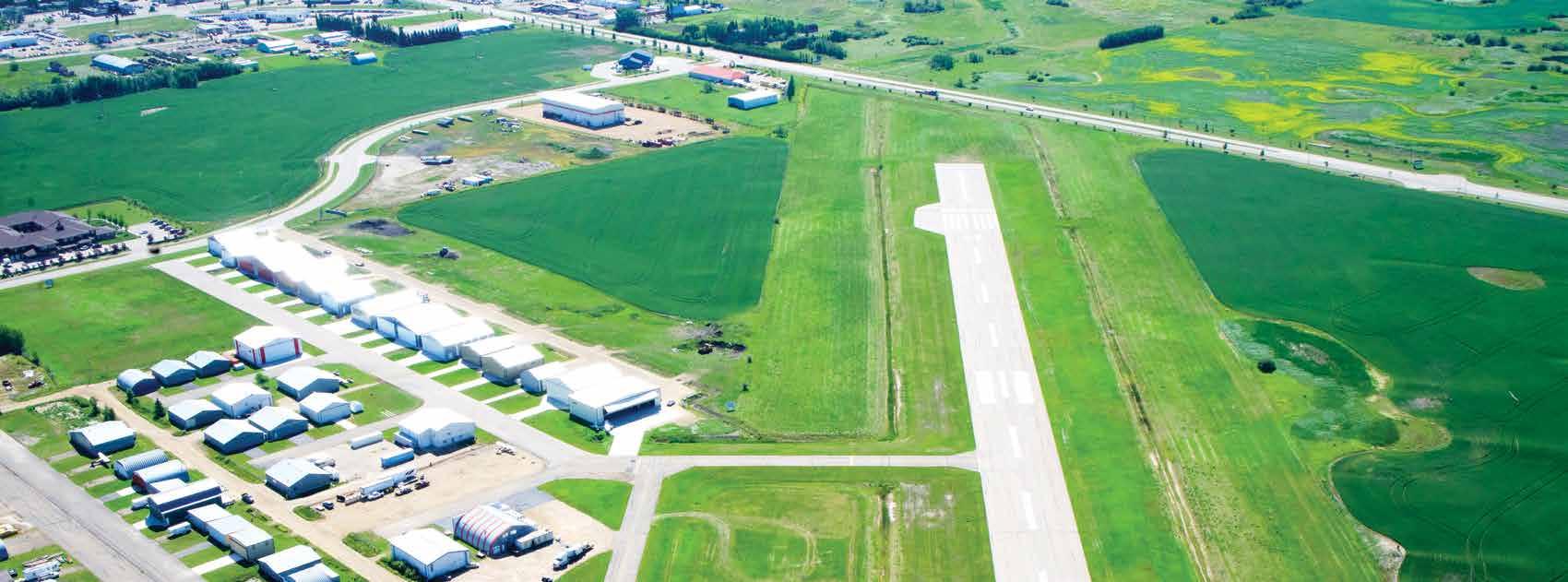

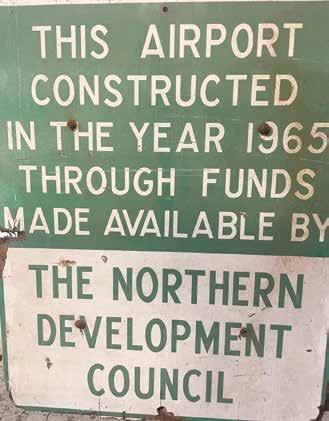
In 1965 the Slave Lake Airport was constructed with funds made available by the Northern Development Council, the same year the Town of Slave Lake was incorporated. The airport was operated by Alberta Transportation until 1995 when they ‘’handed’’ over airports to the municipalities. From there, the Slave Lake Airport Services Commission was born with the Town of Slave Lake and the MD of Lesser Slave River as its members.
Previous to the airport’s current location, the airport was located in the same area as our senior housing Vanderwell Lodge and elementary school CJ Schurter, which locals indicate was in the 1950’s to early 1960’s. Growth of the town required it to be moved further out. Still located in town, it is now fully surrounded by the industrial park, residential housing, and the lake. In 2010, Transport Canada required the airport to become certified due to being located in a buildup area.
The main purpose of the airport was to support forestry wildfire fighting. With its strategic location, it has become one of forestry’s main locations. The airport also supports an air ambulance base, general aviation, charters, and the oil and gas industry. On average, the airport sees between 7,500 to 10,000 movements annually, with a good majority of the movements for essential services such as air
ambulance and wildfire fighting.
The airport is operated by two fulltime and one casual employee, reporting to a board which comprises of three town councilors, three MD councilors, and one director at large. The airport remains a separate entity from the Town and MD, keeping all the revenue the airport receives with the airport.
Over the years the airport has been successful in securing grants to keep it up to standard. In 2016, the airport received an ACP grant to refurbish the airfield lighting, becoming the first airport in Canada with 100 per cent LED lighting and also the first airport in Canada to meet lighting requirements under the new TP 312 fifth-edition regulations. In 2018, it secured a CAP grant to resurface the runway, and in 2023, received another ACP grant to conduct an airport master plan. In 2025, it was awarded a Drought and Flood grant to protect the shoreline from further erosion, which was threatening the runway safety area.
To celebrate the success of the airport and 60 years of operation, the airport is holding a fly-in event promoted by Alberta Air Tours and will include a static display of forestry wildfire tankers, helicopters, and air ambulance. The airport has also invited 4 Wings Cold Lake and a refurbished Second World War Canso aircraft. The event will also showcase local musical artists and kid’s activities.
This event will be a great opportunity for aviation enthusiasts, forestry and air ambulance personnel, and the general public to get together and reminisce the history of the airport and the future of it.
